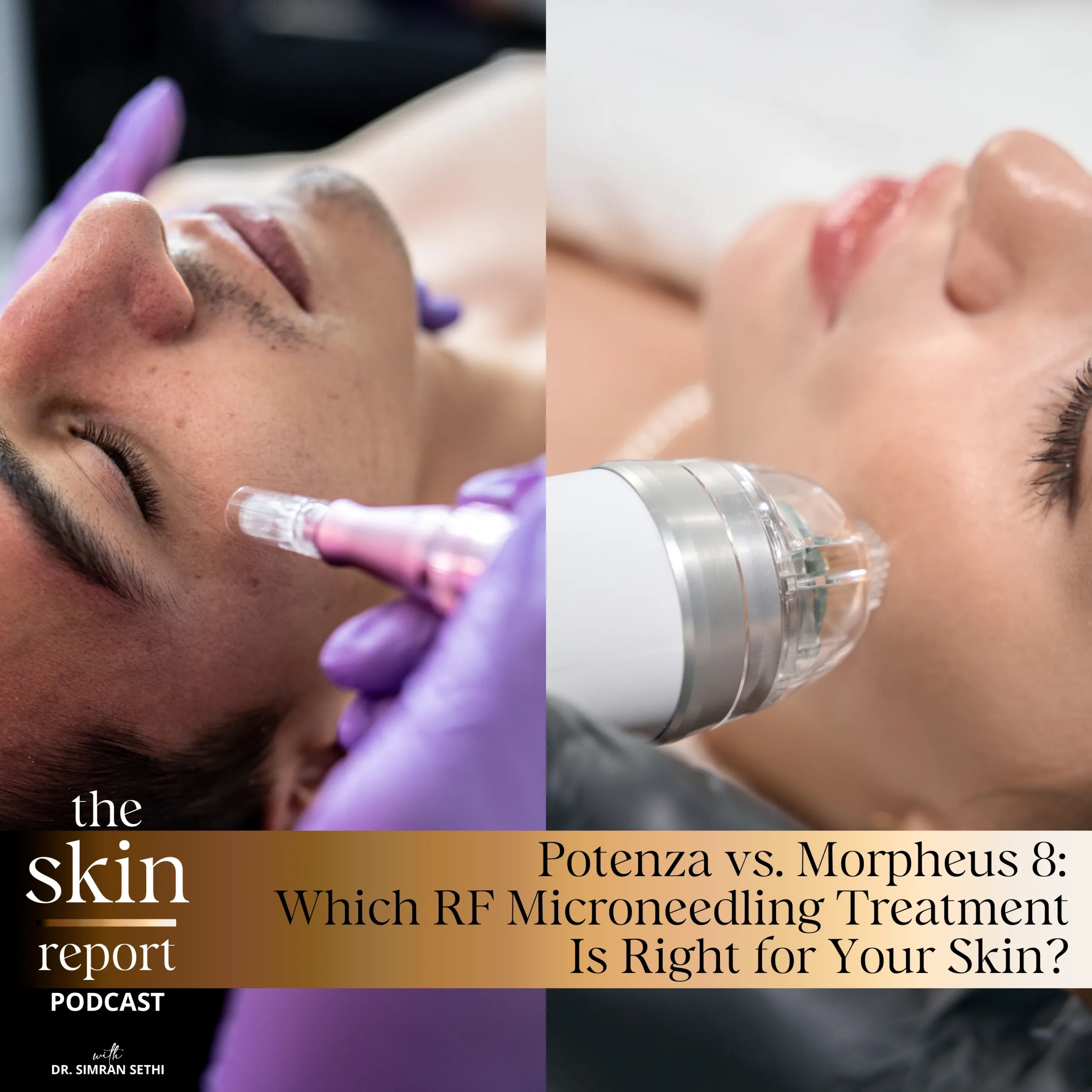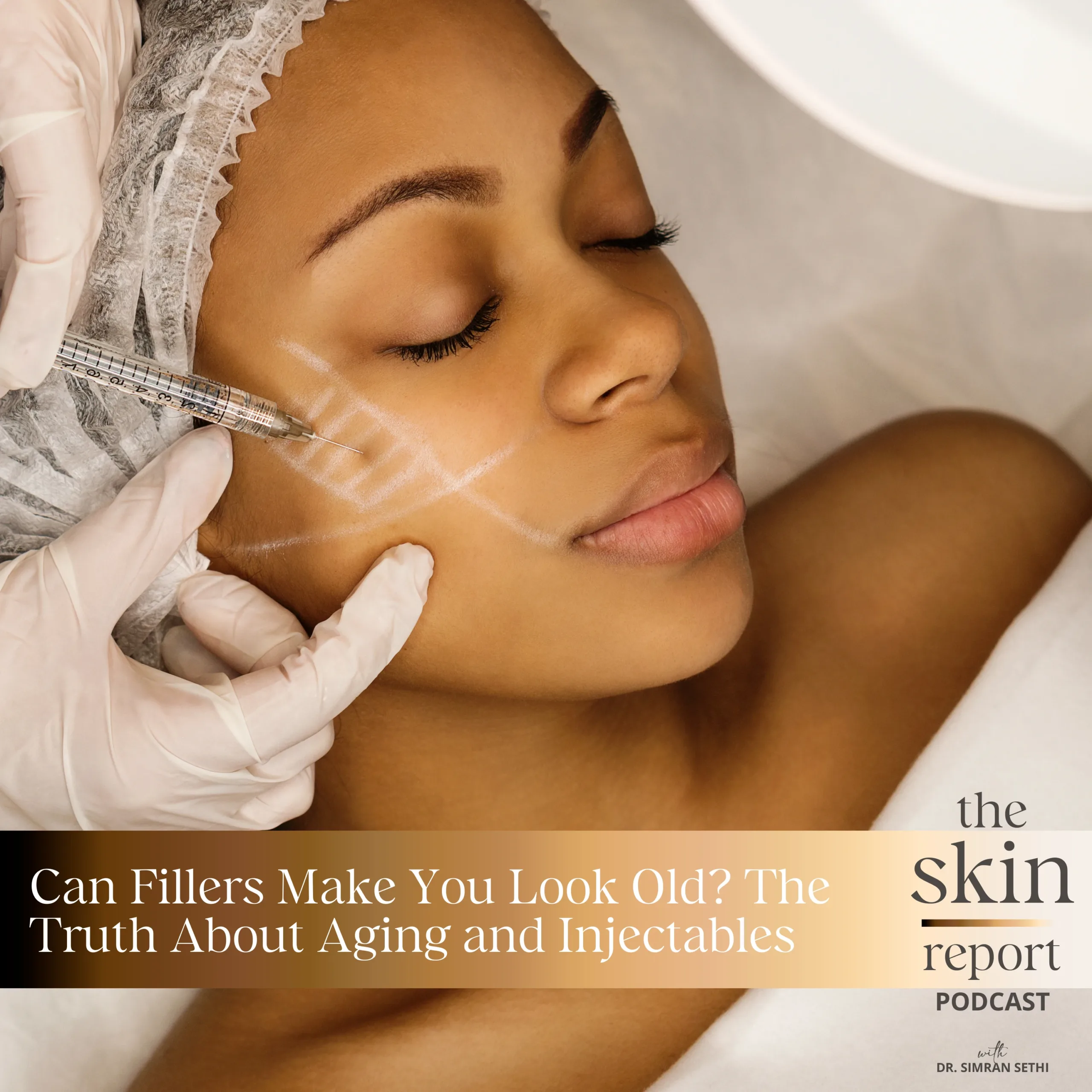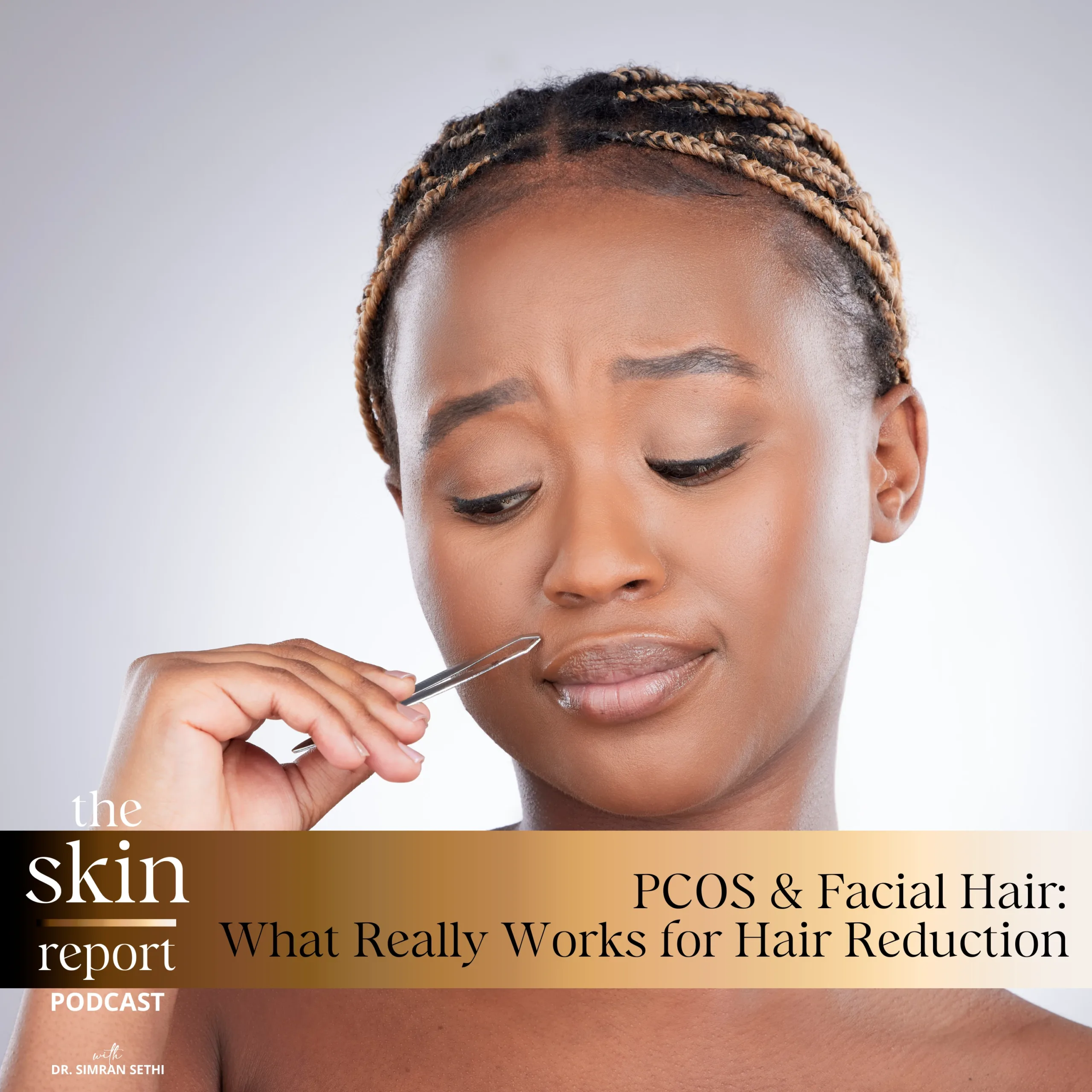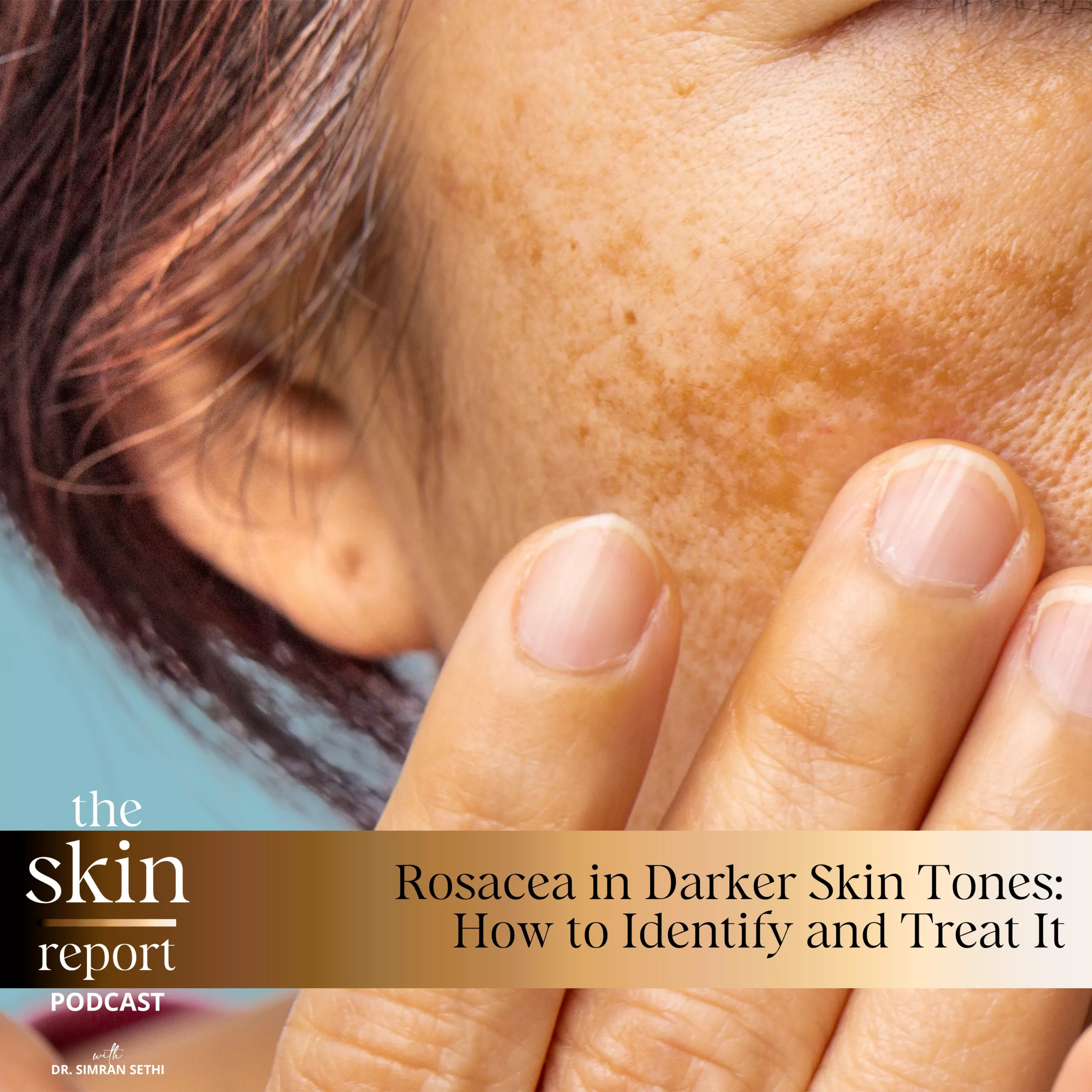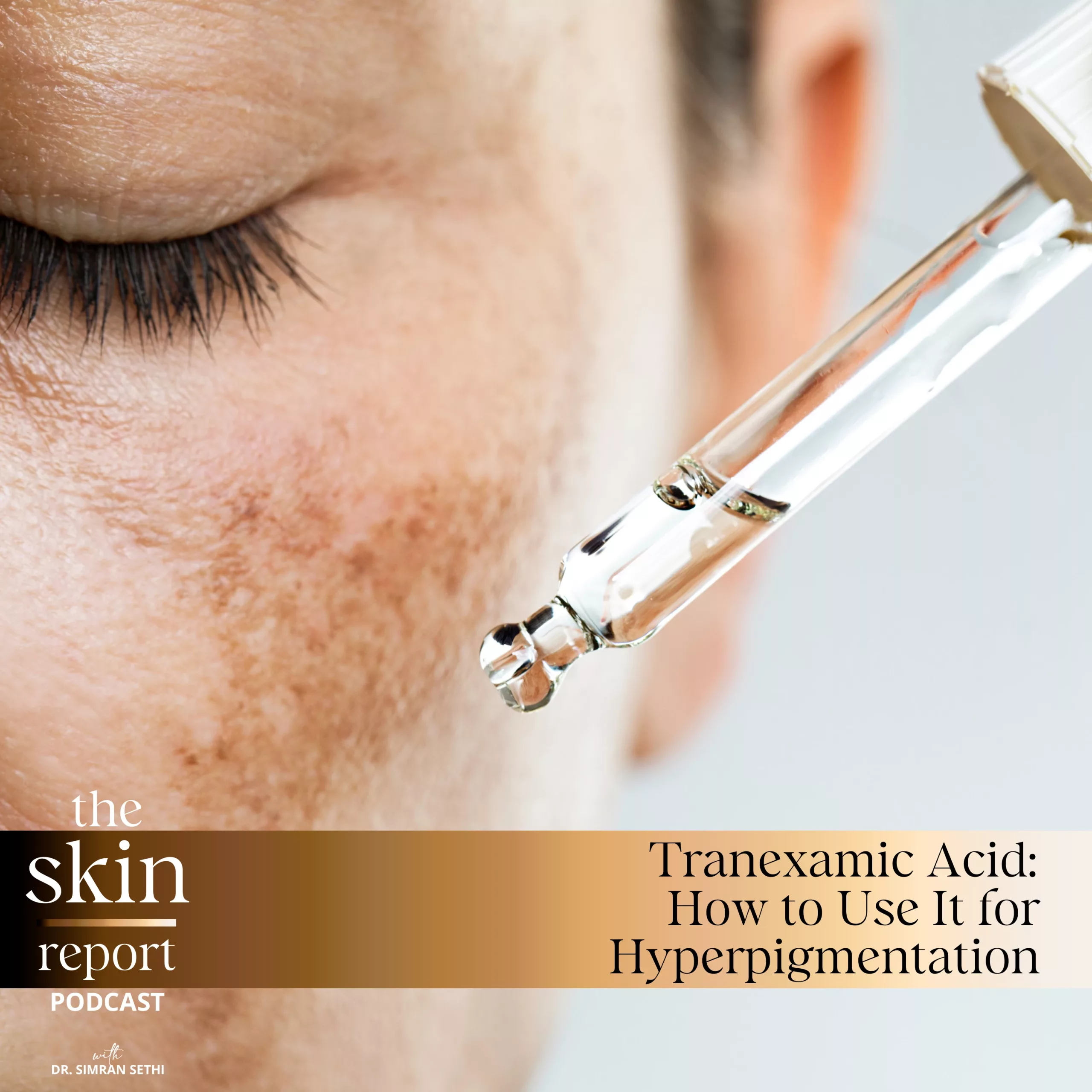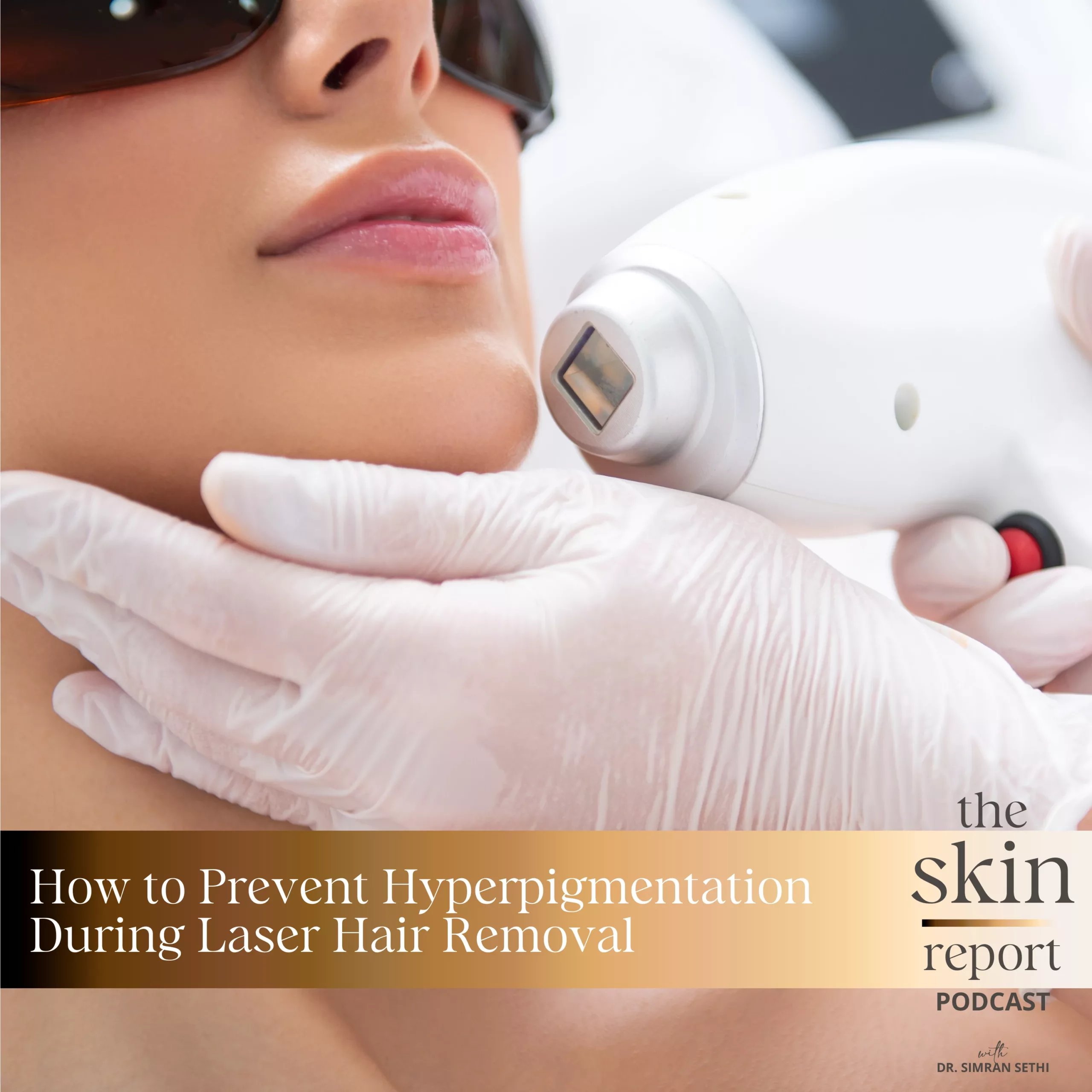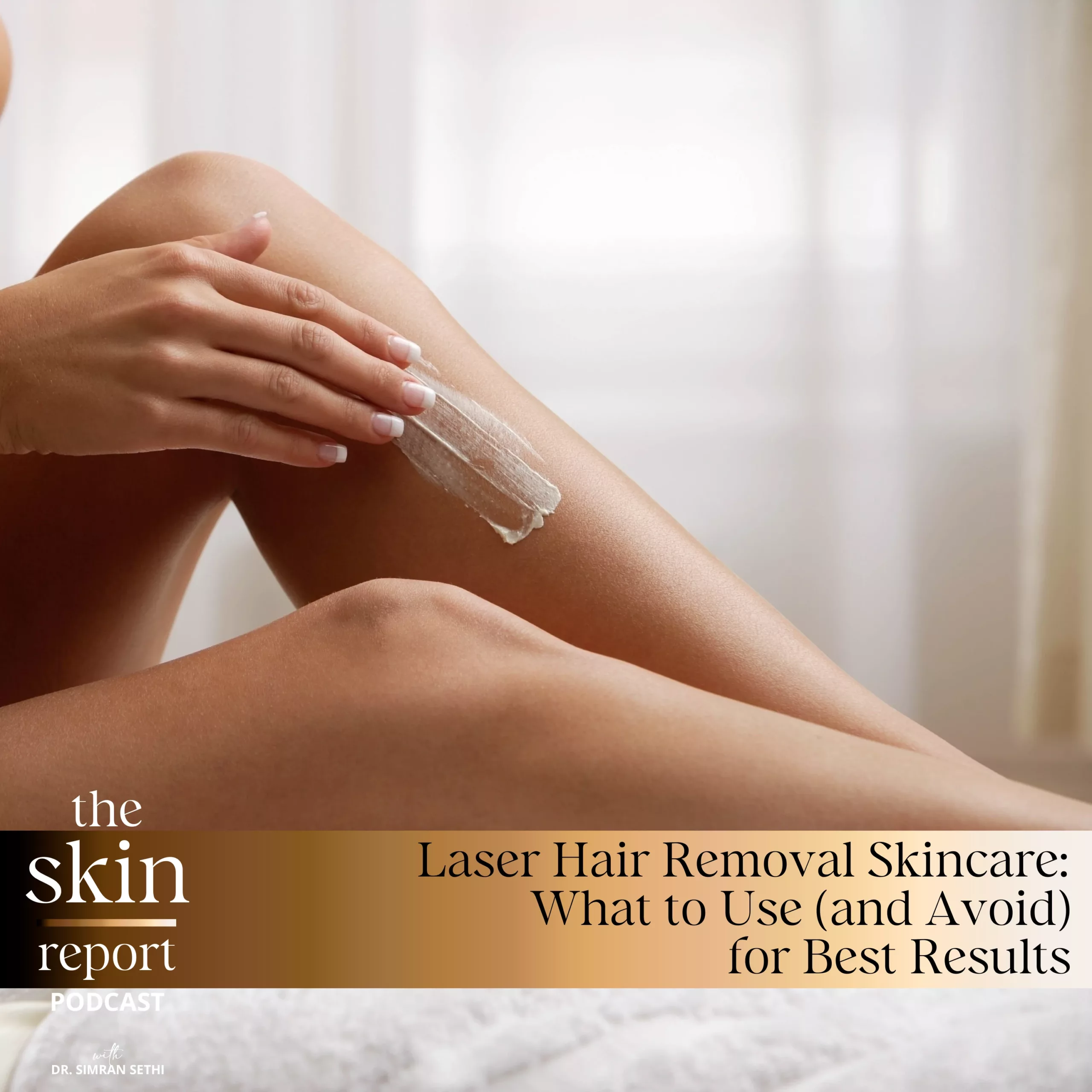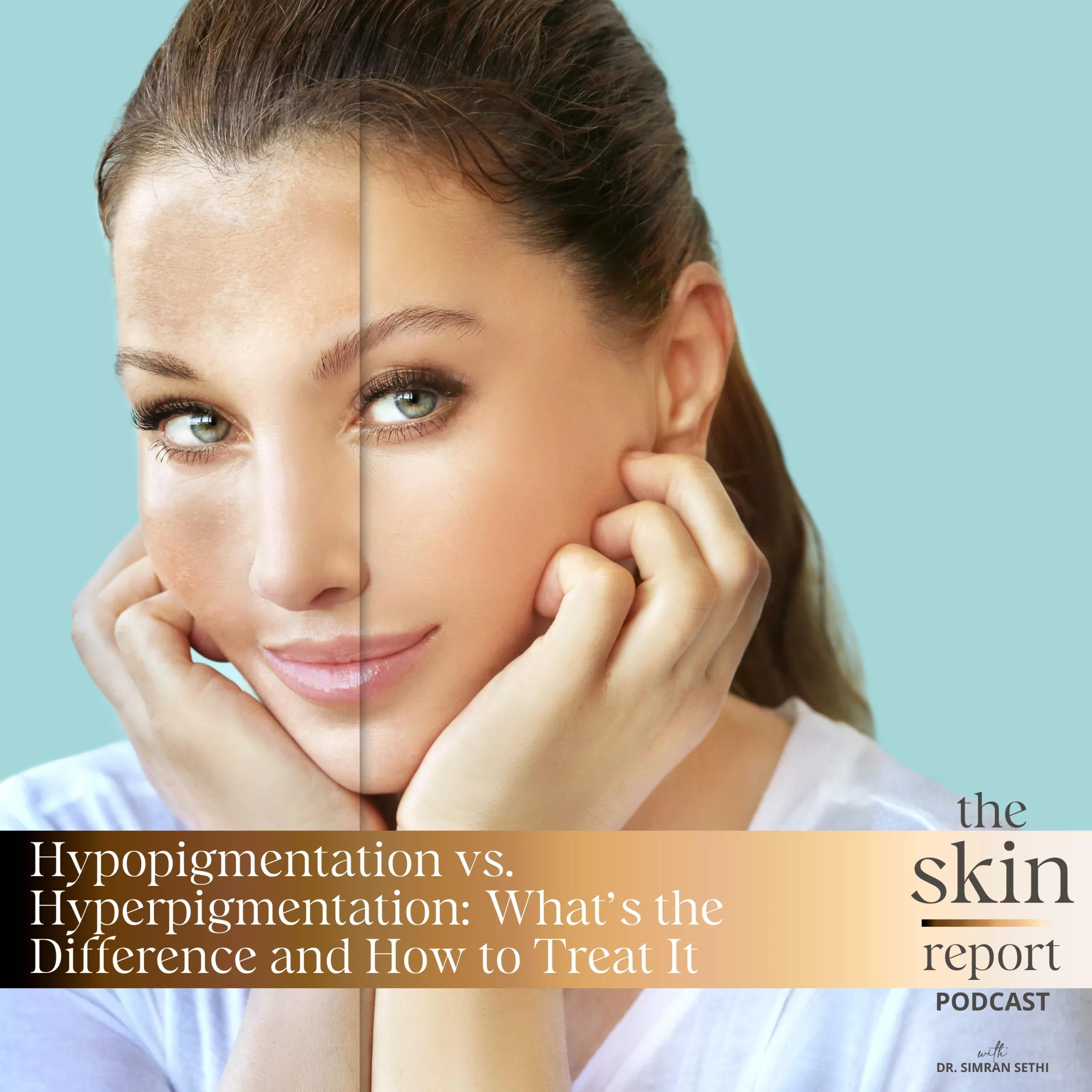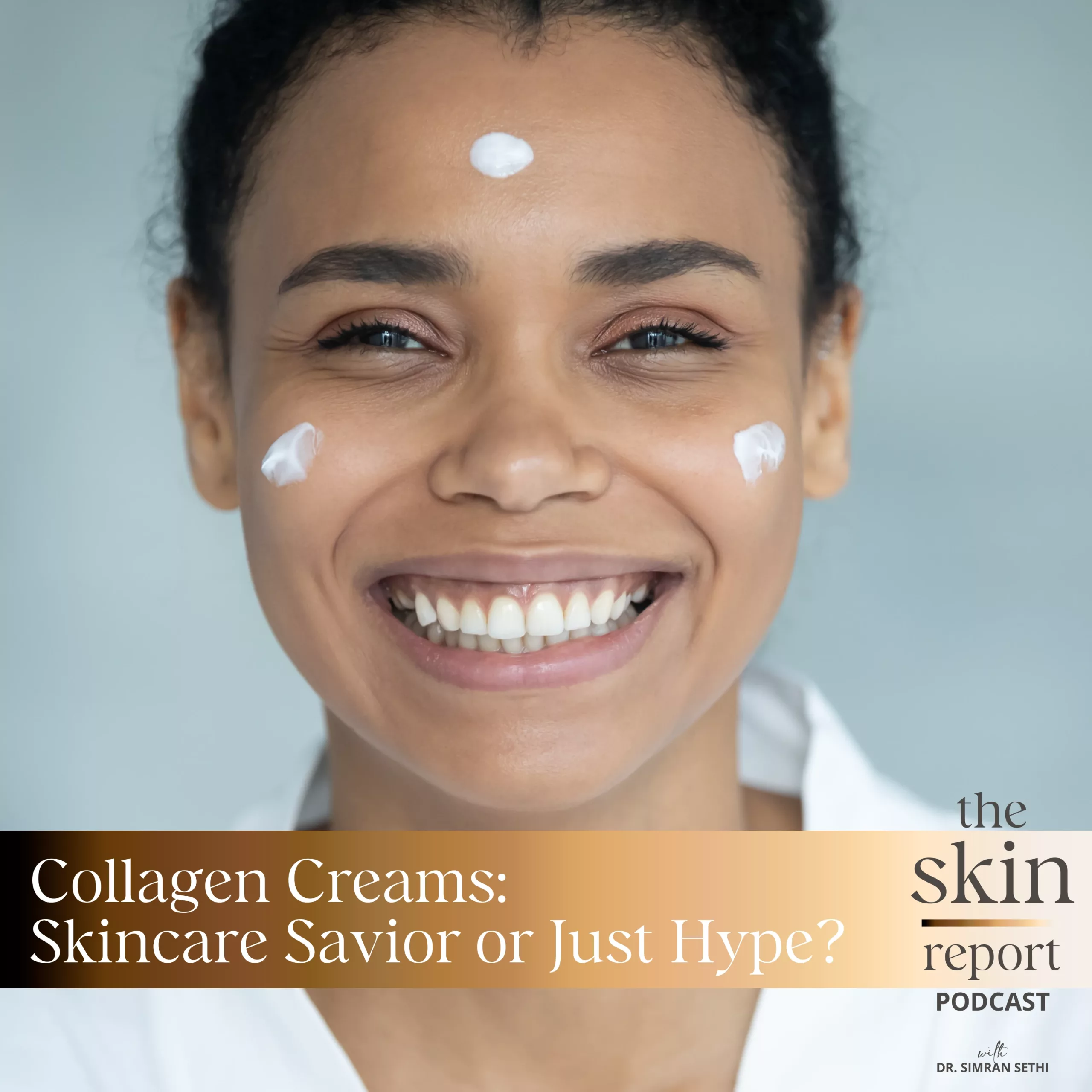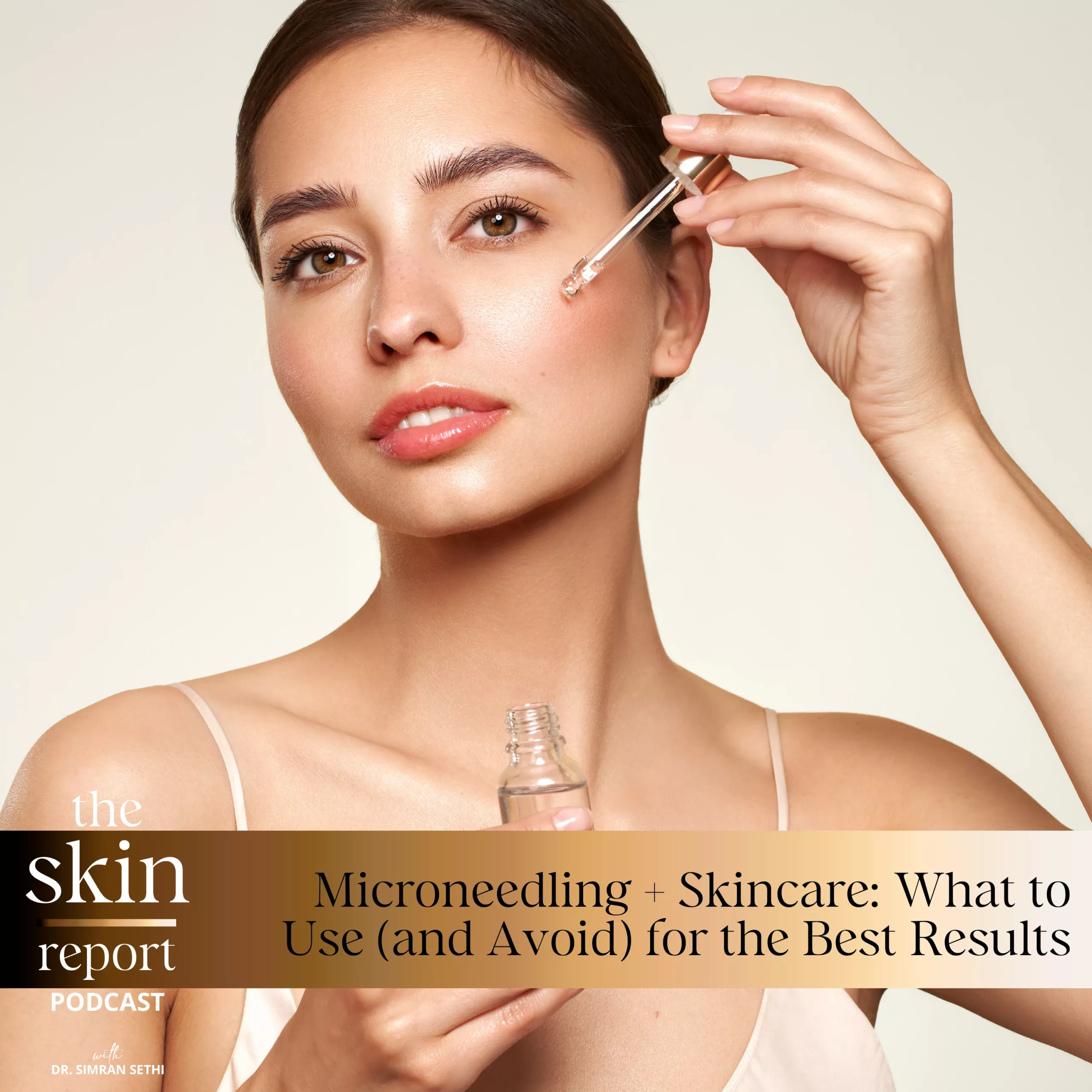Popular Sunscreens:
Favorites or Flops?
Summer months are steadily approaching, and with them come more opportunities to spend time in the sun. But during your lazy summer days, sunscreen is necessary to keep your skin safe! Sunscreen is a form of skin cancer protection, and choosing the right formulation can make all the difference in your sun safety. This episode will cover sunscreen basics and recommendations, so you’ll know which products are sun protection favorites or flops!
The Skin Report is a podcast created to educate listeners on methods to improve skin health for people of all ethnicities and ages. On this episode, host Dr. Sethi tackles the topic of sunscreens and sun protection. She educates listeners all about the best ingredients to look for in a sunscreen formulation, according to the US Food and Drug Administration. Then, from oxybenzone to avobenzone, she breaks down the facts surrounding which ingredients and chemicals to avoid when seeking eco-friendly reef-safe sunscreens. Finally, Dr. Sethi discusses Sephora’s 2023 sunscreen recommendations and provides insights on her favorite sunscreens to keep your skin safe as you soak up the rays!
Follow and DM a question for Dr. Sethi to answer on The Skin Report Podcast:
Renew Beauty Instagram:
https://www.instagram.com/renewmd_beauty/
RenewMD Beauty Medical Spas, California:
https://renewmdwellness.com/
The Skin Report Season 1 Episode 9: Chemical vs Mineral Sunscreen:
https://theskinreportbydrsethi.com/season-1-episode-9-chemical-vs-mineral-sunscreen/
This transcript was exported on April 18, 2023 -view latest version here.
Skincare can sometimes feel overwhelming. Whether it’s finding the right products, ingredients or treatments, there’s a lot out there, but not always for people of African, Hispanic, Middle Eastern and Eastern South Asian descent. That’s why I set out to educate myself and others so that we can all feel beautiful in our skin. Hello, and welcome back to the Skin Report. I’m Dr. Simran Sethi, an internal medicine doctor, mom of three, and CEO and founder of ReNewMD Medical Spas and Skin by Dr. Sethi.
Spring is now here and, for many of us, so are sunnier days. Today we’ll be breaking down popular sunscreens, our favorites and the flops. We’ll also tackle which ingredients to look out for and which to avoid. Keep on listening to find out the safest ways to soak up the sun.
Before we go into the sunscreens we love, I want to first discuss the relationship between sunscreen and the FDA, as it’s an important one. Sunscreens are regulated by the US Food and Drug Administration because sunscreen is a form of skin cancer prevention. Therefore, every sunscreen you see on the shelves of your local department or drugstore in the US have to get first tested in FDA labs and their ingredients are continuously reviewed. This is greatly advantageous to consumers, but the information can also be confusing and take time to trickle down to actual regulations around sunscreen ingredients.
More recently, sunscreen’s absorption into human skin and bloodstream has come under scrutiny as certain sunscreens have been found to kill the coral reefs. Another aspect of this discussion is understanding the acronym GRASE, G-R-A-S-E. GRASE stands for Generally Recognized as Safe and Effective, and has a lot to do with the absorption into the body at levels below 0.5 nanograms per milliliter. Unfortunately, certain ingredients found in numerous popular sunscreens are being investigated further and some are deemed questionable.
In general, there are two types of sunscreen categories, mineral and chemical barrier sunscreens. First, it’s important to remember that the word chemical does not mean that the ingredient is dangerous. Chemical sunscreens are designed to absorb in your skin and provide long-lasting coverage, versus mineral ones that have a tendency to rub off the skin. But lately, some types of ingredients in chemical sunscreens have come under greater scrutiny because we’ve gained more user and population experience over time with them.
Most importantly, I’d also like to say that while we’ll be discussing certain chemicals to stay away from, this should not deter you from using sunscreen altogether. The safety aspects of using sunscreen far outweigh not wearing it. Again, this is why I began this show, to help you make more informed decisions and feel less overwhelmed when shopping for products. Before writing off sunscreen altogether, let’s go over what we know so that we can make a more informed choice when we’re at the store.
There are three GRASE categories that a sunscreen ingredient can fall into based on their safety and efficacy data. Category I GRASE sunscreens have sufficient clinical data to be deemed safe and effective. Category II ingredients have shown to be found in blood plasma levels at levels greater than what is recommended by the FDA and are not considered safe for use. Finally, Category III GRASE ingredients fall somewhere in the middle, where they don’t have enough data to prove full safety, like Category I, but don’t have adverse data indicating that they’re dangerous either.
Today, I want to spend some time to explain the ingredients in this category because they make up a vast majority of popular sunscreens, and I do feel that it’s important to be educated about them, especially because there’s an equally abundant variety of mineral sunscreens that are excellent options no matter what skin type and tone you have.
Let’s dive into the first GRASE Category III ingredient that is commonly seen in chemical barrier sunscreens, oxybenzone and avobenzone. These ingredients are both in a class of chemicals called benzophenes, which have been banned in Australia and Hawaii due to their deleterious effects on the coral reefs. Additionally, oxybenzone has been found in breast milk at levels 180 times what the FDA recommends and a scary 500 times after just four days of continuous use.
The next chemical I want to discuss is octocrylene. Octocrylene, another benzophene, has been shown to increase skin sensitivities and, again, found in high concentrations in serum and breast milk. Finally, octocrylene is even more closely associated with coral reef destruction. Octocrylene is often paired with avobenzone because it helps stabilize it from breaking down. This is why it is a common ingredient in waterproof sunscreens. Octocrylene is closely linked to causing allergic reactions in children, especially those with eczema, so it is an ingredient that should be avoided if you have sensitive skin.
With all this being found, I’ve become a big proponent of mineral sunscreens with a slight tint. The tint not only prevents a white cast on darker skin tones, but is an effective UV and blue light blocker. When we return, we’ll talk more about mineral versus chemical sunscreens, the advantages and disadvantages of each.
Last year, I did an episode on chemical versus mineral sunscreen, which I highly recommend listening to as we enter the spring and summer months. In season one, episode nine, I explained that mineral sunscreens use ingredients like zinc oxide and titanium dioxide to block UV rays, whereas chemical sunscreens absorb the ray from the sun. At this time, you’re probably wondering why chemical sunscreens even exist, but they have some important advantages. First, chemical sunscreens don’t wash off the skin easily, which is a good choice if you sweat a lot or touch your face frequently. Second, they don’t create a white cast that a lot of mineral sunscreen cause, but again, a tinted mineral sunscreen prevents this too.
However, I have some gripes with chemical sunscreens. Chemical sunscreens are banned in places like Australia and Hawaii because when swimmers use sunscreens containing avobenzone or oxybenzone, those contaminate ocean water and have led to killing the coral reefs. This makes me wary of applying such products on the skin, especially as chemical sunscreen’s mechanism of action is to first absorb into the skin. If you see a sunscreen that advertises being reef conscious, be sure to look on the back for avobenzone or oxybenzone as many of these eco-friendly sunscreens will still contain those ingredients.
Another disadvantage to chemical sunscreens is the amount of time it takes to become effective. Chemical sunscreens work about 30 minutes after application, as they have to get fully absorbed by the skin before they start blocking UV rays. Many don’t realize this, and it is very possible that you don’t have time to wait for your sunscreen to become active before you go outdoors. There’s also some variation in the absorption of chemical sunscreen, as our skin has different thickness levels in different parts of the face and neck. As a product needs to be absorbed first to be active, I feel that this variability in absorption will make the strength of sun protection in different areas of the face vary too.
Looking to Sephora’s recommendations for 2023, I’ve categorized 10 sunscreens into four groups. Those four groups are chemical sunscreens containing avobenzone, chemical sunscreens containing avobenzone and octocrylene, mineral sunscreens, and then sunscreens with blue light protection. First, I want to mention the chemical sunscreens containing avobenzone. They are Supergoop Glow sunscreen, Tula Skincare Protect and Glow, Fenty Skin Hydra Vizor Invisible Moisturizer. Now, all three have other ingredients, like hyaluronic acid in the Supergoop Glow sunscreen and Fenty Skin one that adds to plumpness in the skin. However, they do contain avobenzone, which is a FDA sunscreen Category III ingredient and breaks down within 30 minutes, which means it does not last very long unless it’s mixed with octocrylene. While we have inconclusive data on itssafety in humans, it has shown damaging effects on coral reefs and thus been banned in some island nations. It has also been shown to absorb into the bloodstream. However, given the risks of using avobenzone in skincare, there are other sunscreen options which offer more safety and are in similar price ranges.
Next are sunscreens from the list containing both avobenzone and octocrylene. These sunscreens are Supergoop Unseen Sunscreen, Paula’s Choice Daily Youth Extending SPF 50, Lancome UV Expert Defense SPF 50, Glow Recipe Watermelon Glow Niacinamide Sunscreen SPF 50. Like avobenzone, octocrylene falls into the FDA GRASE Category III, but it increases the longevity of the UV filtering effects of avobenzone. Compared to the first group I mentioned, this group will stay active much longer. However, octocrylene has been shown to cause allergic reactions in many children and people with sensitive skin, so if you have eczema, inflamed or sensitive skin, I would avoid this ingredient. I also thought that the GlowRecipe Watermelon Glow SPF was an interesting combination because it also has zinc oxide, a mineral sunscreen ingredient, in it, which is very safe, but it also contains octocrylene. Remember that octocrylene is likely not a great choice for sensitive skin. As there are so many great options without octocrylene or avobenzone, it’s important to know this.
The third group is mineral sunscreens, which are GRASE Category I active ingredients and my favorite. These sunscreens are Tatcha The Skin Sunscreen, GlowRecipe Watermelon Glow, Shiseido Oil-Free Sunscreen, Biossance Squalane + Zinc Sunscreen, Farmacy Green Defense Sunscreen. All of these are excellent choices and say for all skin types and tones. Mineral sunscreens used to be a no-go for people with darker skin tones as they can appear chalky or give the skin a white cast. Recent formulations have definitely addressed this issue by adding a tint or other ingredients to make it seamlessly blend into the skin. Of this category, the Glow Recipe Watermelon Glow is my least favorite because it also contains octocrylene, as we said. While this does extend the protection, it also increases skin sensitivity and is not a GRASE Category I ingredient.
I have overall favorites this group, but first I want to talk about our last group, sunscreens with blue light protection. Did you know that blue light rays are actually the most abundant form of UV rays that we’re exposed to outside? This is actually why the sky is blue. Blue light is part of the visible light spectrum and we are continuously being exposed to it outside and inside from indoor lighting and electronic devices and screens. Today, we know so much more about the harmful effects of blue light exposure on skin than we did a decade ago, but a lot of products have not caught up with giving us protection from it. Studies have shown blue light exposure increases skin pigmentation and collagen breakdown. In my opinion, a sunscreen should only be considered broad spectrum if it has UVA, UVB and blue light protection. What are the sunscreens with blue light protection? They would be Supergoop Glow Sunscreen, Tatcha The Silk Sunscreen, and Farmacy Green Defense Sunscreen. In this list, blue light defense is delivered via different botanical and organic ingredients, but unfortunately, the Supergoop Glow formulation also contains avobenzone.
That was a lot of information, so thank you for sticking with me. When we return, we’ll go over my favorites of the bunch, as well as some additional sunscreen tips and tricks to make sure you are properly protected this spring and summer.
What are my favorites? I would say that the winners have to be Tatcha The Silk Sunscreen and Farmacy Green Defense Sunscreen. Why is that? Both of these are mineral formulations with a high concentration of zinc oxide, 10% in Tatcha and 18.23% in Farmacy, a FDA Category I GRASE ingredient, without the use of octocrylene or any skin irritating compounds. Additionally, both of these formulations deliver blue light protection, which makes them truly full spectrum against UVA, UVB and blue light outdoors and indoors.
I know some of what we spoke on today may have used second guessing your sunscreen. I want to leave you with some scientific facts and not to scare you out of using sunscreen. While mineral sunscreens have been deemed a Category I compliant GRASE product does not mean all other ingredients are dangerous or carcinogenic. We do not have definite data around avobenzone and octocrylene’s long-term effects on humans, and the reason they continue to be used in formulations is because they help sunscreens last longer on the skin and prevent any white cast or pasty appearance.
Wearing any kind of sunscreen is more important than the ingredients, but given the fact that we have so, so many options, it’s equally important to know facts around the ingredients so that you can make more informed decisions. If I had a choice between wearing a sunscreen that looks and feels great on my skin and blends in with it but contains octocrylene, I’ll choose it over one that is mineral based which gives me an obvious wide cast. Now, why do I say this? When picking a sunscreen, the most important factors are an SPF greater than 30, how long does it last on your skin. If you’re sweating a lot or wipe your face frequently, maybe wearing a mask all day causing friction rub on the skin, wearing a chemical barrier sunscreen may be a better option. Lastly, how does it look on your skin? Does it cause a white cast or does it blend in?
Today, we have options for all skin types and tones, but being an informed consumer is important. Even though we have a lot of information available to us, it can be confusing. I hope this episode helps you make more informed decisions in the context of your beauty goals, skin tone type, and lifestyle. Thanks for listening, and until next time, love the skin you’re in and celebrate your beauty.
If you’d like to learn more about science-backed skincare or medical aesthetic treatments, please subscribe to and turn on notifications for The Skin Report so you always know when a new episode is up. We have a newsletter that you can sign up for on theskinreportbydrsethi.com so that you can stay up to date on all our new episodes, blogs, products and more. Additionally, if you have a skincare question or want to make an episode topic recommendation, please message me at theskinreportbydrsethi.com, which is linked in my show notes, and I’ll be sure to answer your question in an episode soon. We’ve received some great questions so far and I’ll try and answer them at the end of every episode, so keep them coming.
Transcript by Rev.com


